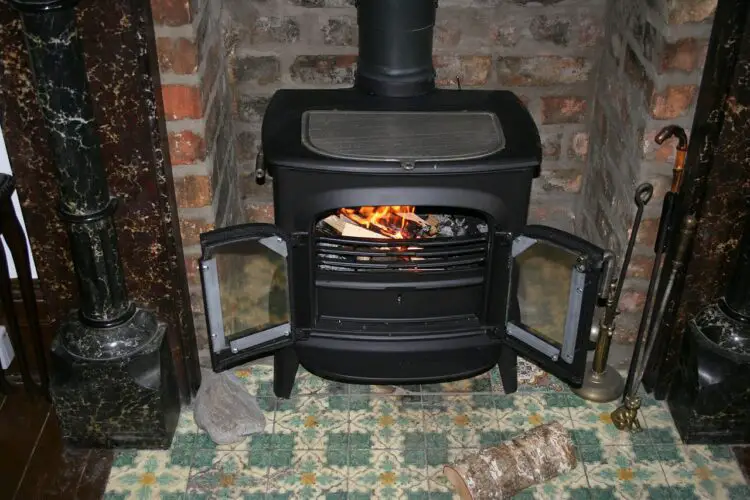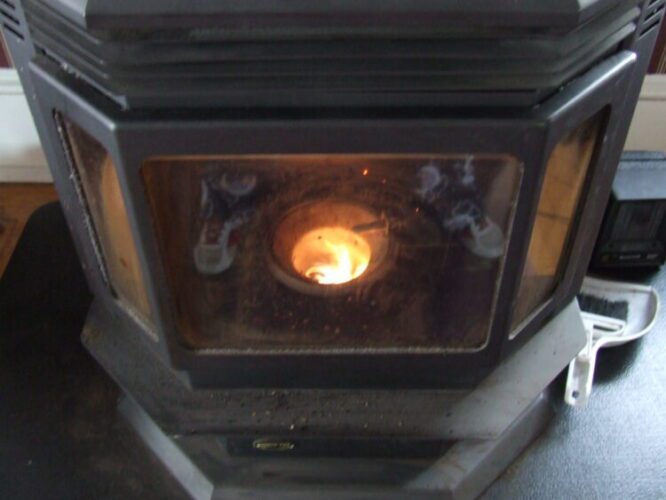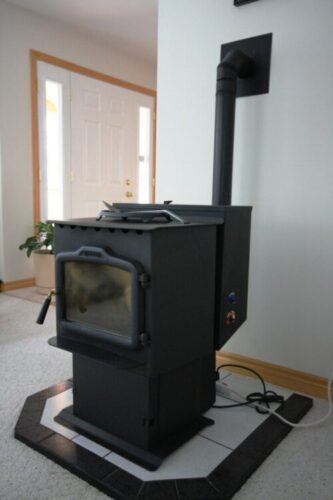When it comes to heating your home, wood burning and pellet stoves are popular choices. But which one is right for you? In this article, we’ll compare the two options to help you make an informed decision.
Wood burning stoves have been used for centuries, providing a cozy and rustic ambiance in homes. They use logs or wood pellets as fuel, offering the captivating aroma and crackling sound of a real fire. On the other hand, pellet stoves are a more modern alternative. They use compressed biomass pellets, which are made from renewable sources such as sawdust or agricultural waste.
So, which is better? The answer depends on various factors, such as your lifestyle, budget, and environmental concerns. Wood burning stoves offer a traditional charm and cost-effectiveness, as you can gather your own wood. Pellet stoves, on the other hand, provide convenience and automation, with easy-to-use controls and the ability to program the stove for consistent heat.
In conclusion, whether you choose a wood burning or pellet stove, both options can effectively heat your home. It’s important to weigh the pros and cons to find the best fit for your needs and preferences.

Pros and cons of wood burning stoves
Wood burning stoves have been a popular choice for homeowners for centuries. They offer a range of advantages and disadvantages to consider.
Pros of Wood Burning Stoves
1. Ambiance and Aesthetics: Wood burning stoves provide a cozy and rustic ambiance that many homeowners find appealing. The crackling sound of the fire and the captivating aroma of burning wood create a warm and inviting atmosphere in any room.
2. Cost-Effectiveness: Wood is generally more cost-effective compared to other fuel sources. If you have access to a steady supply of firewood, you can significantly reduce your heating costs. Gathering your own wood can be an enjoyable and rewarding experience for those who appreciate the process.
3. Reliability: Wood burning stoves can be relied upon even during power outages. This makes them a valuable heating option in areas prone to extreme weather conditions or unreliable electricity supply.
Cons of Wood Burning Stoves
1. Labor-Intensive: Wood burning stoves require regular maintenance and upkeep. You need to gather, chop, and store firewood, which can be physically demanding. Additionally, you’ll need to clean the stove and chimney regularly to ensure safe and efficient operation.
2. Environmental Impact: While wood is a renewable resource, burning it can contribute to air pollution. Wood smoke contains particulate matter and other pollutants that can negatively affect air quality, especially in urban areas. It’s important to use dry, seasoned wood and ensure proper ventilation to minimize the environmental impact.
3. Inconsistent Heat Output: Wood burning stoves require manual feeding and adjusting to maintain desired heat levels. This can lead to inconsistent heat output and temperature fluctuations, requiring more active involvement in regulating the stove.

Pros and cons of pellet stoves
Pellet stoves offer a modern alternative to wood burning stoves. They come with their own set of advantages and disadvantages.
Pros of Pellet Stoves
1. Convenience and Automation: Pellet stoves are incredibly easy to use. They come with user-friendly controls that allow you to adjust heat levels and program the stove for consistent heat output. Some models even offer remote control capabilities, making it convenient to operate the stove from anywhere in your home.
2. Efficiency: Pellet stoves are known for their high efficiency. They burn biomass pellets at a controlled rate, maximizing heat output while minimizing fuel consumption. This translates to cost savings and reduced environmental impact.
3. Cleaner Burning: Pellet stoves produce fewer emissions compared to wood burning stoves. The combustion process is more efficient, resulting in lower levels of particulate matter and other pollutants. This makes pellet stoves a cleaner and greener heating option.
Cons of Pellet Stoves
1. Dependence on Electricity: Unlike wood burning stoves, pellet stoves require electricity to operate. They have built-in fans and motors that facilitate the combustion process and distribute heat. This means that during power outages, you won’t be able to rely on the stove for heating.
2. Fuel Cost and Availability: While biomass pellets are readily available, their cost can vary depending on your location and demand. It’s important to factor in the cost of pellets and ensure a steady supply to avoid any inconvenience during colder months.
3. Noise: Pellet stoves can produce some noise due to the fans and motors used for combustion and heat distribution. While the noise is generally low and tolerable, it’s something to consider if you prioritize a quieter heating option.
Cost comparison: wood burning vs. pellet stoves
When it comes to cost, both wood burning and pellet stoves have their own considerations.
Wood Burning Stoves
The cost of wood burning stoves can vary depending on the brand, size, and features. On average, a wood burning stove can range from $1,000 to $4,000, excluding installation costs. The installation cost will depend on factors such as chimney requirements and any additional modifications needed.
The cost of wood is generally more affordable compared to pellets. If you have access to your own firewood supply, you can reduce your heating costs significantly. However, if you need to purchase firewood, the cost can vary depending on your location and the type of wood you choose.
Pellet Stoves
Pellet stoves typically cost between $1,500 and $3,500, excluding installation. The installation cost can vary depending on factors such as venting requirements and any necessary electrical work. Additionally, you’ll need to consider the cost of purchasing biomass pellets, which can range from $200 to $300 per ton.
While the upfront cost of a pellet stove may be higher compared to a wood burning stove, the long-term cost savings can be significant. Pellet stoves are highly efficient and require less fuel compared to wood burning stoves. This means you’ll spend less on fuel over time, potentially offsetting the initial investment.
Environmental impact: wood burning vs. pellet stoves
When it comes to the environmental impact, both wood burning and pellet stoves have their own considerations.
Wood Burning Stoves
Wood burning stoves can contribute to air pollution if not used properly. Burning unseasoned or wet wood can release higher levels of pollutants into the air. It’s important to use dry, seasoned wood and ensure proper ventilation to minimize the environmental impact.
On the positive side, wood is a renewable resource, and if harvested responsibly, it can be a sustainable heating option. Additionally, using wood from local sources reduces transportation emissions associated with other fuel sources.
Pellet Stoves
Pellet stoves are considered a cleaner and greener heating option compared to wood burning stoves. The combustion process is more efficient, resulting in lower emissions of particulate matter and other pollutants. Additionally, biomass pellets are made from renewable sources such as sawdust or agricultural waste, making them a sustainable fuel option.
However, it’s important to consider the overall life cycle impact of pellet stoves. The production and transportation of biomass pellets can have environmental implications. It’s crucial to choose pellets from reputable sources that follow sustainable practices.
Maintenance and upkeep: wood burning vs. pellet stoves
Both wood burning and pellet stoves require regular maintenance and upkeep to ensure safe and efficient operation.
Wood Burning Stoves
Wood burning stoves require ongoing maintenance to keep them in optimal condition. This includes cleaning the stove and chimney regularly to remove creosote buildup, which can be a fire hazard. It’s also important to inspect the stove for any signs of damage or wear and tear.
Additionally, you’ll need to gather, chop, and store firewood. This can be physically demanding and time-consuming, especially if you rely solely on your own supply. It’s also important to ensure you have a dry and well-seasoned wood supply to maximize efficiency and minimize emissions.
Pellet Stoves
Pellet stoves require less manual maintenance compared to wood burning stoves. However, they still require regular cleaning to remove ash and soot buildup. This includes cleaning the burn pot, ash pan, and heat exchanger. It’s important to follow the manufacturer’s guidelines for cleaning and maintenance to ensure optimal performance.
Additionally, you’ll need to regularly check and clean the venting system to ensure proper airflow. This helps prevent any blockages that could affect the stove’s efficiency and safety. It’s also important to inspect the hopper and auger system for any signs of damage or malfunction.
Heating efficiency: wood burning vs. pellet stoves
When it comes to heating efficiency, pellet stoves generally have the upper hand.
Wood Burning Stoves
Wood burning stoves can vary in efficiency depending on factors such as stove design, wood quality, and installation. On average, wood burning stoves have an efficiency range of 60% to 80%. This means that a significant portion of the heat generated by the fire is lost through the chimney.
To maximize efficiency, it’s important to choose a well-designed stove and burn dry, seasoned wood. Proper installation and regular maintenance also play a crucial role in optimizing heat output.
Pellet Stoves
Pellet stoves are known for their high efficiency. On average, pellet stoves have an efficiency range of 70% to 90%. The combustion process is tightly controlled, ensuring maximum heat output while minimizing fuel consumption.
Additionally, pellet stoves offer the ability to program the stove for consistent heat output. This means you can set the stove to maintain a specific temperature throughout the day, reducing energy waste and increasing comfort.
Factors to consider when choosing between wood burning and pellet stoves
When deciding between wood burning and pellet stoves, it’s important to consider the following factors:
1. Lifestyle: Consider your lifestyle and the level of involvement you’re willing to have in the heating process. If you enjoy the process of gathering firewood and maintaining a traditional fire, a wood burning stove may be a better fit. If you prefer convenience and automation, a pellet stove may be more suitable.
2. Budget: Evaluate your budget and consider the upfront cost as well as long-term fuel expenses. While pellet stoves may have a higher upfront cost, their efficiency can result in long-term cost savings. On the other hand, wood burning stoves offer cost-effectiveness if you have access to a steady supply of firewood.
3. Environmental Concerns: Consider the environmental impact of each option. If minimizing emissions and using renewable fuel sources are important to you, a pellet stove may be the greener choice. However, if you have access to responsibly sourced firewood and prioritize sustainability, a well-maintained wood burning stove can be a sustainable option.
4. Heating Needs: Evaluate your heating needs and the size of the area you want to heat. Consider the heating capacity and output of each stove to ensure it can effectively heat your space. It’s also important to consider any additional features such as built-in fans or programmable settings that can enhance comfort and efficiency.
Popular wood burning and pellet stove brands
When it comes to wood burning and pellet stoves, there are several reputable brands to consider. Some popular options include:
1. Wood Burning Stoves:
– [Jøtul](https://jotul.com)
– [Vermont Castings](https://www.vermontcastings.com)
– [Napoleon](https://napoleonfireplaces.com)
2. Pellet Stoves:
– [Harman](https://www.harmanstoves.com)
– [Quadra-Fire](https://www.quadrafire.com)
– [Enviro](https://enviro.com)
It’s important to research and compare different brands to find the one that best suits your needs in terms of quality, features, and warranty.
Conclusion: finding the right stove for your needs
When it comes to choosing between wood burning and pellet stoves, there is no definitive answer. Both options have their own set of advantages and disadvantages. It ultimately boils down to your lifestyle, budget, and environmental concerns.
Wood burning stoves offer a traditional charm and cost-effectiveness if you have access to a steady supply of firewood. They provide a cozy ambiance and the satisfaction of gathering and maintaining your own fire. However, they require more manual labor, regular maintenance, and can contribute to air pollution if not used properly.
Pellet stoves provide convenience and automation, with easy-to-use controls and the ability to program the stove for consistent heat. They are highly efficient, have a lower environmental impact, and offer the flexibility to use renewable fuel sources. However, they require electricity to operate and may have higher upfront costs.
Ultimately, it’s important to consider your needs, preferences, and the factors discussed in this article to make an informed decision. By weighing the pros and cons, considering your budget and environmental concerns, and evaluating your heating needs, you can find the right stove to keep your home warm and cozy.

